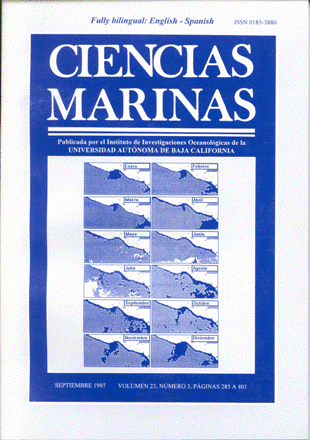Organotin compounds in marine water and sediments from the port of Ensenada, Baja California, Mexico
Main Article Content
Abstract
During September and October 1995, samples of surface sediments and water were collected to develop an analytical set-up to determine the concentrations of the organic compounds known as tributyltins (TBTs), including tributyl-, dibutyl- and monobutyltin. The method was then used to measure the levels of these contaminants in the port of Ensenada, Baja California. The method is based on hydride generation with atomic absorption detection. The concentrations determined were found to be relatively high (33 to 1021 ng g–1 of Sn in sediments and 66 to 469 ng L–1 in water samples), when compared to those obtained in similar works at San Diego Bay in California, USA. Comparisons are also made with other geographical locations. These results suggest that the port of Ensenada is an area that is receiving substantial amounts of these chemicals and might already be affecting the health of local biota. Two sources of these chemicals were identified: the activities associated with painting and cleaning of both commercial and sport boats, and the presence, at the time of the sampling, of an old platform near the entrance to the port facilities. The presence of the three compounds suggests that there is a permanent entry of these pollutants; furthermore, the presence of decreasing concentrations, starting with the more butylated compounds, suggests a recent introduction. Thc higher concentrations found in the sediment samples indicates the existence of an eflicient method of removal from the water column to the sediments of these compounds. The removal mechanism is associated with the presente of organic matter in the port area. In the sediments, the distribution of TBTs was partially dictated by the organic content, as a significant correlation (α = 0.05) between TBT concentration and organic content was found.
Downloads
Article Details
This is an open access article distributed under a Creative Commons Attribution 4.0 License, which allows you to share and adapt the work, as long as you give appropriate credit to the original author(s) and the source, provide a link to the Creative Commons license, and indicate if changes were made. Figures, tables and other elements in the article are included in the article’s CC BY 4.0 license, unless otherwise indicated. The journal title is protected by copyrights and not subject to this license. Full license deed can be viewed here.

